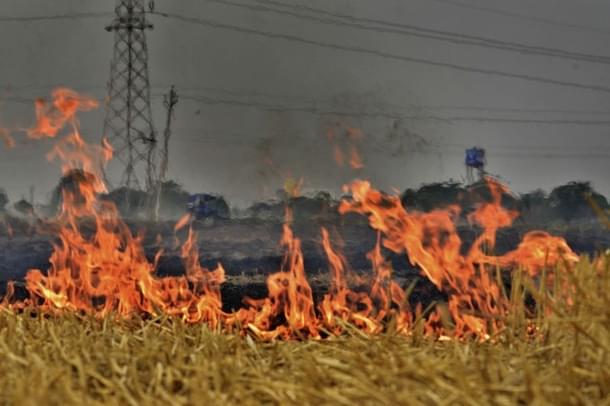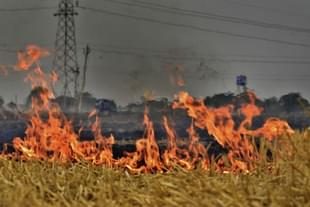Ideas
Is Congress-Ruled Punjab Responsible For Delhi’s Pollution?
The True Picture
Oct 30, 2018, 06:07 PM | Updated 06:07 PM IST
Save & read from anywhere!
Bookmark stories for easy access on any device or the Swarajya app.


With farmers in Punjab resorting to stubble burning, people in Delhi are choking. The smoke filled with harmful pollutants emitting out of stubble burning has enveloped the National Capital Region (NCR) once again.
Stubble burning refers to setting ablaze crop residues within the agricultural field itself after the crops have been harvested. This burning is basically done to prepare the fields for the next sowing season. However, in this burning process, particulate matter (PM) and gaseous pollutants (CO2, CH4, CO, N2O, NO2, NO3 and SO2) are emitted out. It has been noted that this stubble burning in the states located in the northern side of the Delhi city is one of the important reasons behind its air pollution.
Where Is The Pollution Coming From?
As explained above, states like Punjab and Haryana are generally blamed for most of the pollution in the capital city. For example, according to a report by System of Air Quality Forecasting and Research (SAFAR) on 27 October 2018, stubble burning in Punjab and Haryana contributed to 32 per cent of Delhi’s overall air pollution.
But Facts Tell A Different Story
According to NASA’s satellite imagery, most of these stubble burning incidents are happening in the state of Punjab. Haryana’s contribution is very less and has seen a further reduction after a new strategy was adopted by the Bharatiya Janata Party (BJP) government there.
A screenshot from NASA’ website is shown below, where yellow marked circle denotes the approximate area of Punjab and red dots represent the fire incidents.
Below is the satellite image from NASA that shows the fire counts in Punjab, Haryana and western Uttar Pradesh on 28 October 2018. It is to be noted that the months of October and November are the harvesting season in Punjab and Haryana. Therefore, most of these fire counts are due to stubble burning.
The image shows:
Fire incidents in Punjab – 2,847
Fire incidents in Haryana – 341
Fire incidents in western Uttar Pradesh – 228
Thus, it is amply clear that the number of fire incidents in Punjab is 734 per cent more than the number of fire incidents in Haryana. The Congress covernment in Punjab appears to have no strategy or measures in place to check the menace of stubble burning by farmers and the consequent harm it causes to the people living in the Delhi NCR.
Most of the news reports in India attribute Delhi’s air pollution to stubble burning in Punjab and Haryana. However, an in-depth analysis of the issue shows that Haryana and western Uttar Pradesh, the BJP-ruled states have controlled these stubble burning incidents, by adopting a multi-pronged strategy.
While majority of the stubble burning incidents, as seen in the satellite imagery of NASA, clearly establish that much of the Delhi’s air pollution is caused by the rampant stubble burning by the farmers in Punjab, in the absence of any concrete strategy planned or adopted by the Congress government.
Thus, evidently, it seems that it is more of a governance issue, as Haryana and western UP have shown the way how to do it effectively, while the Congress-ruled Punjab is still finding excuses rather than dealing with it.
This piece was first published on The True Picture and has been republished here with permission.
Also Read: The Captain Who Fiddled While Stubble Burnt
The True Picture is an online media analysis portal.





